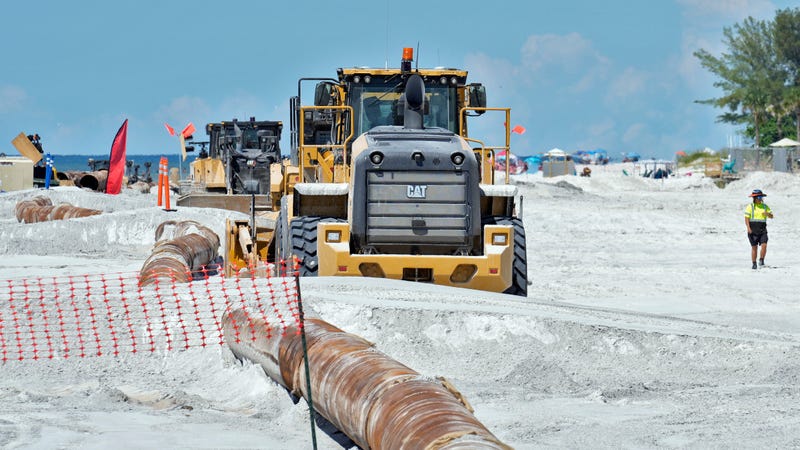
INDIAN ROCKS BEACH, Fla. (AP) — The white sandy beaches along a swath of Florida's Gulf Coast were battered by three hurricanes last year, leading to a multimillion-dollar effort to repair a coastline that is the region's economic engine.
Crews are working with dredges, trucks and pipelines along the 35-mile (56-kilometer) stretch of beach in Pinellas County that includes cities such as Clearwater Beach, Indian Rocks Beach, Belleair Beach and Redington Beach. It's a prime tourist destination that is still recovering from hurricanes Helene, Milton and Debby.
Helene was the most destructive for the beach towns, even though it made landfall far to the north. Twelve people died in Pinellas County because of strong storm surge that reached 8 feet (2.4 meters) high in some places.
In past years, the U.S. Army Corps of Engineers played a major role in beach restoration, but not this time. The Corps wants private landowners to sign up for permanent easements that would allow government access in perpetuity — a change that has met with stiff resistance.
So Pinellas County is doing the beach restoration itself, spending more than $125 million in tourism tax revenue to cover the costs. The county also has an easement program, but because some property owners won't sign up, there will be gaps in the beach renourishment that could lead to damage in future storms.
“We can't do it as well as we could,” said Barry Burton, the Pinellas County administrator. “Our desire is to place sand across as much of the beach as we can.”
The project calls for using 2.5 million cubic yards (1.9 million cubic meters) of sand that's being dredged and pumped from offshore. In places where property owners refused to sign the easements, new sand is being placed toward the Gulf side of the beach, which is public. The beaches are being widened by as much as 100 feet (30 meters).
For its part, the Army Corps said it can't justify spending millions of U.S. taxpayer dollars on beach renourishment without permanent easements to allow access.
“The Corps cannot construct a project with ‘gaps’ due to missing easements,” the agency said in a statement. “The Congressionally authorized, engineered project cannot provide the level of protection when constructed with gaps.”
Those gaps mean that properties with sand dunes and an elongated beach might be next to another one with nothing — and that's where the storm surge in future hurricanes will go.
In the past, the Army Corps paid about 65% of the beach restoration costs. Now, Pinellas County is footing the bill alone, with money that had been earmarked for a new Tampa Bay Rays baseball stadium and related development that fell through.
The team's current ballpark, Tropicana Field, was heavily damaged in Hurricane Milton last October but is being repaired in time for next season. The Rays were sold to a new group of investors this year, and where the team will play in the future is in limbo.
The county won't be able to afford beach work like this again, said Public Works Director Kelli Hammer Levy.
“This is the last and only time,” she said. So it’s really important that going forward, we have federal support."